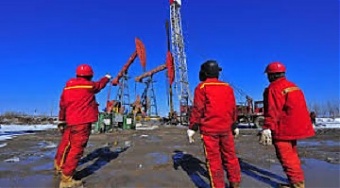Analytics, Energy, EU – Baltic States, Financial Services, Oil, USA
International Internet Magazine. Baltic States news & analytics
Friday, 19.04.2024, 05:33
US shale has a glaring problem
 Print version
Print version |
|---|
il prices are down a bit, but are still close to multi-year highs. That should leave the shale industry flush with cash. However, a long list of US shale companies are still struggling to turn a profit.
A new report from the Institute for Energy Economics and Financial Analysis (IEEFA) and the Sightline Institute details the “alarming volumes of red ink” within the shale industry.
“Even after two and a half years of rising oil prices and growing expectations for improved financial results, a review of 33 publicly traded oil and gas fracking companies shows the companies posting negative free cash flows through June,” the report’s authors write. The 33 small and medium-sized drillers posted a combined $3.9 billion in negative cash flow in the first half of 2018.
The glaring problem with the poor financial results is that 2018 was supposed to be the year that the shale industry finally turned a corner. Earlier this year, the International Energy Agency (IEA) painted a rosy portrait of US shale, arguing in a report that “higher prices and operational improvements are putting the US shale sector on track to achieve positive free cash flow in 2018 for the first time ever.”
The improved outlook came after years of mounting debt and negative cash flow. The IEA estimates that the US shale industry generated cumulative negative free cash flow of over $200 billion between 2010 and 2014. The oil market downturn that began in 2014 was supposed to have changed profligate spending, pushing out inefficient companies and leaving the sector as a whole much leaner and healthier.
“Current trends suggest that the shale industry as a whole may finally turn a profit in 2018, although downside risks remain,” the IEA wrote in July. “Several companies expect positive free cash flow based on an assumed oil price well below the levels seen so far in 2018 and there are clear indications that bond markets and banks are taking a more positive attitude to the sector, following encouraging financial results for the first quarter.”
But the warning signs have been clear for some time. The Wall Street Journal reported in August that the second quarter was a disappointment. The WSJ analysed 50 companies, finding that they spent a combined $2 billion more than they generated in the second quarter.
The new report from IEEFA and the Sightline Institute adds more detail to the industry’s recent performance. Only seven out of the 33 companies analysed in the report had positive cash flow in the first half of the year and the whole group burned through a combined $5 billion in cash reserves over that time period.
Even more remarkable is the fact that the negative financials come amidst a production boom. The US continues to break production records week after week, and at over 11 million barrels per day, the US could soon become the world’s largest oil producer. Analysts differ over the trajectory of shale, but they only argue over how fast output will grow.
Read the original article here








 «The Baltic Course» Is Sold and Stays in Business!
«The Baltic Course» Is Sold and Stays in Business!

